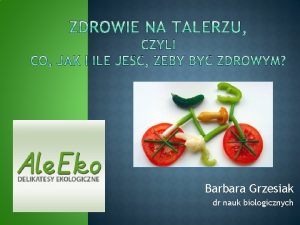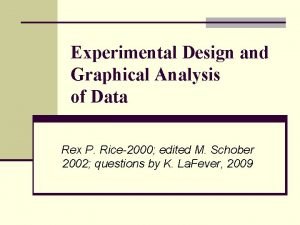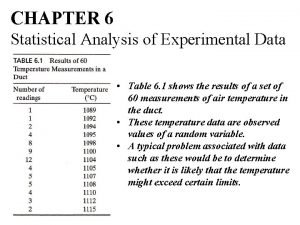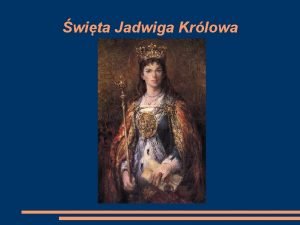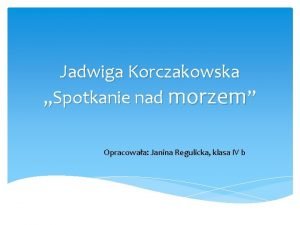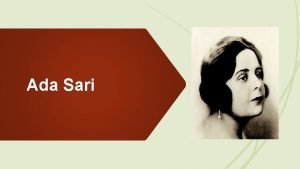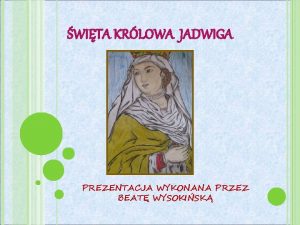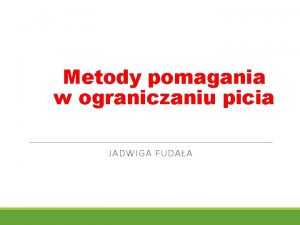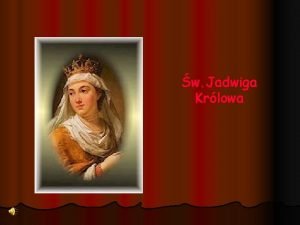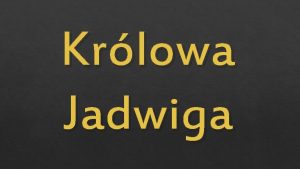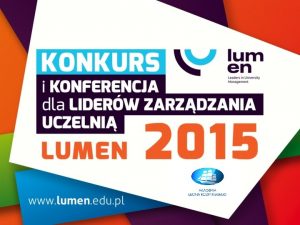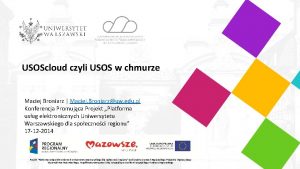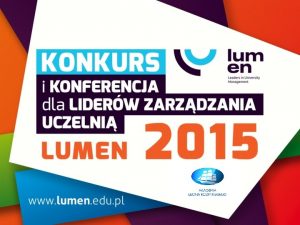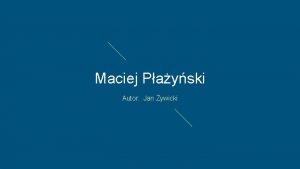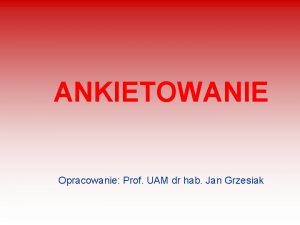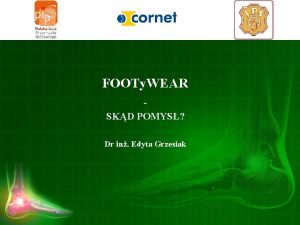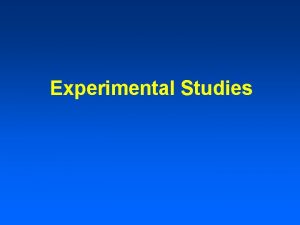Piezoluminescence experimental data analysis Maciej Grzesiak Jadwiga Jeziorska













- Slides: 13

Piezoluminescence: experimental data analysis Maciej Grzesiak, Jadwiga Jeziorska, Tomasz Ostafin Opole University Supervisor: mgr Grzegorz Bujnarowski

Purpose of the exercise Analysis of mechanical stresses with method of the spectroscopy in tester of ruby subjected to irradiating with bundle of heavy ions of the radiation in the function of the dose absorbed and in the function of the depth.

Piezoluminescence Changes in the luminescent radiation triggered with mechanical stresses. It manifesting through the appearance in the spectra of additional lines or strips (with additional centres of the luminescence e. g. vacancies ). These stresses influence to existing spectral lines which can cause shift them.

Experiment Time. Of. Flight 670 Me. V Cyclotron Measuring the profile of the bundle Bombed sample

Spectograph Shamrock SR 303 i. Shamrock SR – 303 i parameters. Focal lenght (mm) 303 Aperture f/4 Raciprocal dispersion ( nm/mm, 2. 6 nominal) Mechanical scan range (nm) 0 to 1450 Wavelenght resolution ( nm) 0. 1 Wavelenght accuracy (nm) +/- 0. 2 Wavelenght reproducibility (nm) +/- 0. 05 Focal plane size ( mm, Wx. H) 28 x 14 Stray light ( meansured AT 20 nm 1. 5 x 10 -4 from 633 nm laser line) Experimental parameters of Shamrock SR – 303 i • • • filter – no filter beam energy – 670 Me. V pattern’s temperature – 77, 35 K angle beetwen pattern and beam - 60 degrees work temperature of CCD’s camera - - 60 degrees. (C)

FLOW DIAGRAM. CCD camera Grating • Motorised Slits Cover Plates: used to control the effective height of the entrance slit (various sizes available)

Principle of confocal laser scanning microscope • • A laser beam passes a light source aperture, then is focused by an objective lens into a small focal volume within a fluorescent speciment. A beam splitter separated the light mixture by allowing only the laser light to pass through and reflecting the fluorescent light intothe detection appararus. After passing a aperture the fluorescent light is detected

Curve of the temperature relation for tester of ruby which for calibrating of curves served for two temperatures it is of liquefied nitrogen (77. 35 K) and for room temperature (293 K). Spectre of tester of aroused ruby with laser lighting for two exchanged temperatures.

max Model spectrum at the temperature of 77, 35 degrees (Kelvin). R 2 peak As you can see maxsimum of the R 2 peak is about 14460, 19 cm-1 , which is correct with results shown for the temperature’s model spectrum. The graph describing the change of the amplitude and shift spectral lines triggered with rise of heavy ion’s dose.

R 2 peak Model spectrum in the room temperature R 2 peak is about 14442, 943 cm-1 , which is correct with results shown for the temperature’s model spectrum. The graph describing the change of the amplitude depending on depth

This graph is presenting a dependence of the tension on an accepted dose of radiation. On this slide we can see a change of putting the maximum of the R 2 depending on the depth

Thanks for coordinators of Bogoliubov Infeld programme , Mr R. Zawodny and Mr W. Chmielowski and for the entire UC board of directors and of course our supervisor Mr. G. Bujnarowski for spending a beatifull moments in Dubna.

Thanks for attention
 Pamela jeziorska-biel
Pamela jeziorska-biel Barbara grzesiak
Barbara grzesiak Experimental vs non experimental
Experimental vs non experimental Cross-sectional correlational design
Cross-sectional correlational design Experimental vs non experimental research
Experimental vs non experimental research Experimental vs non experimental
Experimental vs non experimental Nonexperimental study
Nonexperimental study How to linearize a top opening parabola
How to linearize a top opening parabola Statistical analysis of experimental data
Statistical analysis of experimental data Jadwiga andegaweńska drzewo genealogiczne
Jadwiga andegaweńska drzewo genealogiczne Spotkanie nad morzem jadwiga korczakowska
Spotkanie nad morzem jadwiga korczakowska Jadwiga szayer dawny sopran
Jadwiga szayer dawny sopran Królowa jadwiga prezentacja dla dzieci
Królowa jadwiga prezentacja dla dzieci Jadwiga fudała
Jadwiga fudała

